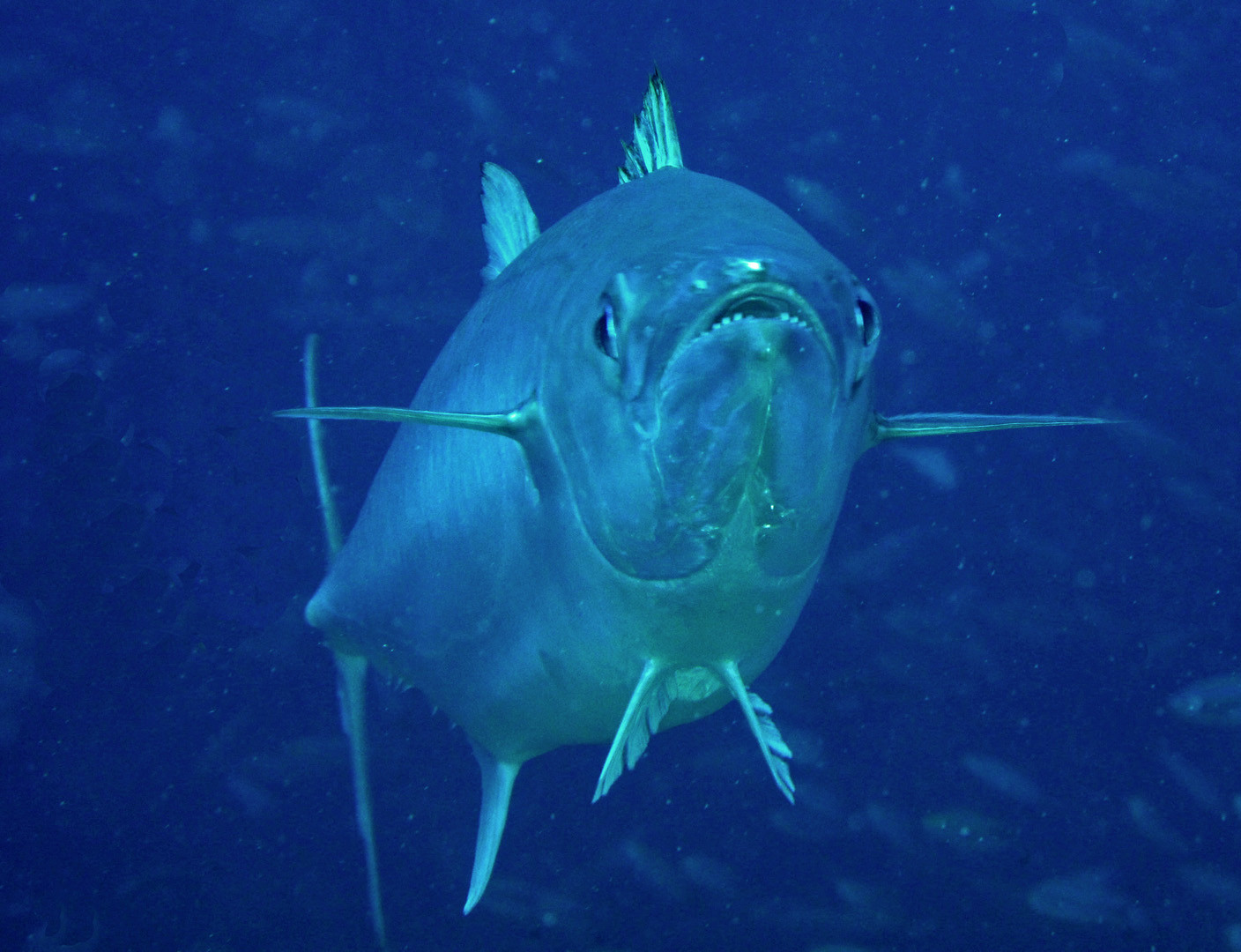
Sea Wonder: Dogtooth Tuna

Photo credit: Lakshmi Sawitri
Dogtooth tuna (Gymnosarda unicolor) is also known as the white tuna. They are an economically important fish found in the Indian and Pacific oceans and an important part of its food web.
Appearance
The dogtooth tuna is aptly named for its 40, dog-like teeth, and is actually a member of the mackerel family. They have streamlined, torpedo-like bodies, with a large head and mouth at the end where their canine teeth are – 20 per jaw to be exact! They have two dorsal fins (one spiny and one softer) and one ventral fin on their underside.
This species doesn’t have scales and its skin is counter-shaded, meaning the back is darker and the belly lighter; the back tends to be a dark blue or blue-green, the sides a shimmery silver, and the belly white. On average, a fully-grown adult will weigh around 40 pounds and be around five feet in length.
Diet and Habitat
Dogtooth tuna are found in the Indian and Pacific oceans, from Australia to East Africa, and in waters off the coast of Japan, the Philippines, and other Pacific islands. The only sanctuary where you’ll find the dogtooth tuna is the National Marine Sanctuary of American Samoa in the Pacific. They are most plentiful on reefs near Aunu’u Island’s Nafanua Bank and Swains Island.
They are primarily pelagic fish (they live offshore) but do go closer to shore where they visit drop-offs near coral reefs and atolls. They are migratory fish and prefer the water in which they live to be between 70- and 80-degrees Fahrenheit. This is also the ideal water temperature for the fish on which they prey: shoaling fish like herring, sprats, mackerel, whiting, cuttlefish, and squid. During feeding frenzies, dogtooth tuna can reach top swimming speeds of 50 miles per hour!
Life History
Dogtooth tuna usually school in groups comprised of individuals that are around the same size, with larger fish being more independent, sometimes seen swimming alongside gray reef sharks. Schooling helps with feeding and avoiding predators.
Spawning (breeding) takes place in the southern hemisphere’s summer months (December, January, and February), where large groups of males and females release gametes into the water column for fertilization. Eggs hatch within a few days after floating near the ocean’s surface. Newly hatched larvae are no more than a quarter-inch in size, and they reach sexual maturity around two or three years old when they are fully grown.
Threats and Conservation
Their white, flaky meat and speed make dogtooth tuna desirable species for both commercial and sport fishing. As such, they are vulnerable to overfishing, with commercial net fishing being their largest threat. Luckily, this species is not listed as threatened or endangered anywhere in the world.
Other threats include climate change, which may displace these migratory fish as waters warm, coral bleaching, which may affect the species on which they feed, and coastal development, which may lead to harmful algal blooms or increased pollution.
We can all do our part to make sure this species stays plentiful by choosing sustainably sourced seafood, supporting policies that benefit coral reefs and other critical habitats, and making small changes at home like turning off the lights when we leave a room and refusing single-use plastic items to reduce our own carbon emissions and pollution footprints.
